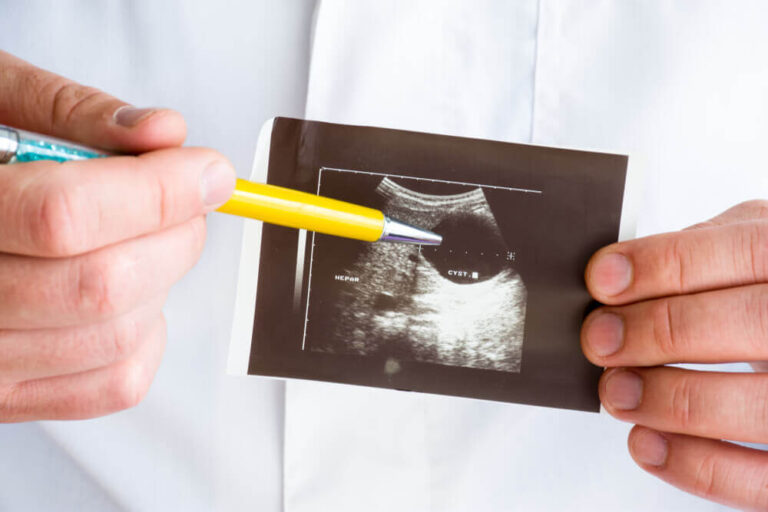What you need to know about liver ultrasound
Ultrasound
is an excellent diagnostic tool at the forefront of medical imaging to assess liver health.
Liver ultrasound can help assess the presence of liver diseases (such as fatty liver), diagnosis of liver lesions, and more. But liver ultrasound can’t always be effective and many factors can affect the accuracy of your scan diagnosis. So carefully read this article prepared by the specialized medical scanning team to be fully prepared for your liver ultrasound and get the best diagnostic accuracy from your scan.

Benefits of liver ultrasound
When you perform liver ultrasound, your radiology report is used by doctors to make important decisions about diagnosis and how to continue treatment. A second opinion by a specialist or subspecialty doctor can help confirm that the reported findings have been accurately assessed. It may also help you and your doctors determine whether screening or subsequent treatment is necessary.
Liver ultrasound usually contains a set of multiple images. The areas captured and the quality of the image captured largely depend on visibility and technique. Inappropriate images can negatively affect what is seen by the radiologist. Diagnosis and determination of liver diseases ultrasound is useful for the diagnosis of liver cysts from solid masses. Some masses have unique ultrasound characteristics while others have similar characteristics in ultrasound. Liver ultrasound is also used to evaluate liver disease including fatty liver.
Ultrasound may be the first screening test to be performed when evaluating the liver. Depending on the results, your doctor may recommend another examination. For example, CT, MRI or biopsy may be shown to differentiate between liver fibrosis and fat, quantify more fat intensity or evaluate other diseases in the liver. A CT scan or MRI may also be recommended for further evaluation of liver lesions.

How long does liver ultrasound take?
One of the most important questions in every patient’s mind before liver ultrasound is: How long does liver ultrasound take? Liver ultrasound is an easy and painless process and on average, liver ultrasound should not take more than 30 minutes. However, if a specific point is observed by your doctor at the time of the scan, more time may be needed for a closer look.
What happens during a liver ultrasound examination?

Read the step-by-step guide below to find out everything that happens during a natural liver ultrasound examination.
• At the beginning of the examination, an allergy gel, odorless and warm, is gently rubbed on the patient’s abdomen.
• The doctor who will perform the examination moves a probe around the abdomen and chest area. The probe photographs the liver and organs around you and produces an ultrasound image.
• During the examination, you will be asked to maintain a continuous breathing pattern, and in some cases, perform several different breathing techniques to capture the best images.
• You will be asked to lie down in different situations, and you may even have to stand during liver ultrasound to get to the best possible place to picture.
• You may feel some pressure on your abdomen when your doctor performs a liver ultrasound.
• After liver ultrasound, the radiologist may talk to you about the results and deliver the written report to you a few days later.
How to prepare for liver ultrasound?
Here are the main steps that need to be done before a liver ultrasound.
• Do not consume any food or liquid eight hours before liver ultrasound. This means that you need to be unhappy for liver ultrasound. Sometimes drinking water is allowed, however, be sure to ask the imaging center if you can take water before scanning.
– Make sure to show up at the location 15 minutes before your set time.
– Wear comfortable and loose clothes.
• Take pre-prescribed compulsory medications.
What does liver ultrasound show?
Those who are curious know: What does liver ultrasound show? Read the following carefully.
Health professionals are able to analyze any abnormalities that occurred in liver ultrasound. In addition, they can accurately determine the difference between cysts and solid masses. This is because the presence of cysts containing liquid with a thin outer wall makes their center appear darker in ultrasound than the liver. Both cysts and solid masses should be carefully evaluated.
Some liver diseases such as hepatitis, cirrhosis and fatty liver (steatosis) can be checked in detail in liver ultrasound. For example, people who suffer from fatty liver, their liver is seen more clearly in liver ultrasound. While people with hepatitis have a darker liver in liver ultrasound. Ciroscular livers appear mass and small. All of these features show the difference between a normal and abnormal liver ultrasound result.
Also, the presence of liquid and dilated bile ducts in close proximity to the liver probably shows the difference between normal and abnormal liver ultrasound findings that can be associated with other organs such as part of the pancreas, right kidney and gallbladder.
Specialized words and words you should learn before reading a liver ultrasound report
There are many confusing words in medicine that you should be aware of to properly understand your liver’s ultrasound scan report. To learn about these terms, take a look at the list below.
- Echogenicity – If echoes look whiter than normal, the liver is ecogenic.
- Lesion – A lesion is an area in the limbs or tissue where significant damage has been caused. Lesion can come from just one wound to, in the worst cases, a tumor.
- Hypoechoic (hypoechoic): If you encounter hypoechoic in your sono-liver report, you can find that your liver is denser or more solid than usual.
- Ascites (Ascites): This word means that a large accumulation of fluids has appeared in a certain area.
- Calculi or kidney stones – if you see calculi in the report it refers to the accumulation of stones.
Final word of medical scan on liver ultrasound:
Finally, it can be said that liver ultrasound is a very convenient and inexpensive way to early diagnosis of many liver diseases. So if you want to do a liver ultrasound scan, first read the initial recommendations well, then book a
liver ultrasound
without worrying and go to the imaging center from which you took the turn. To take a liver ultrasound appointment, you can book an appointment anywhere in the country through an unpaid medical scan and from the nearest location.








